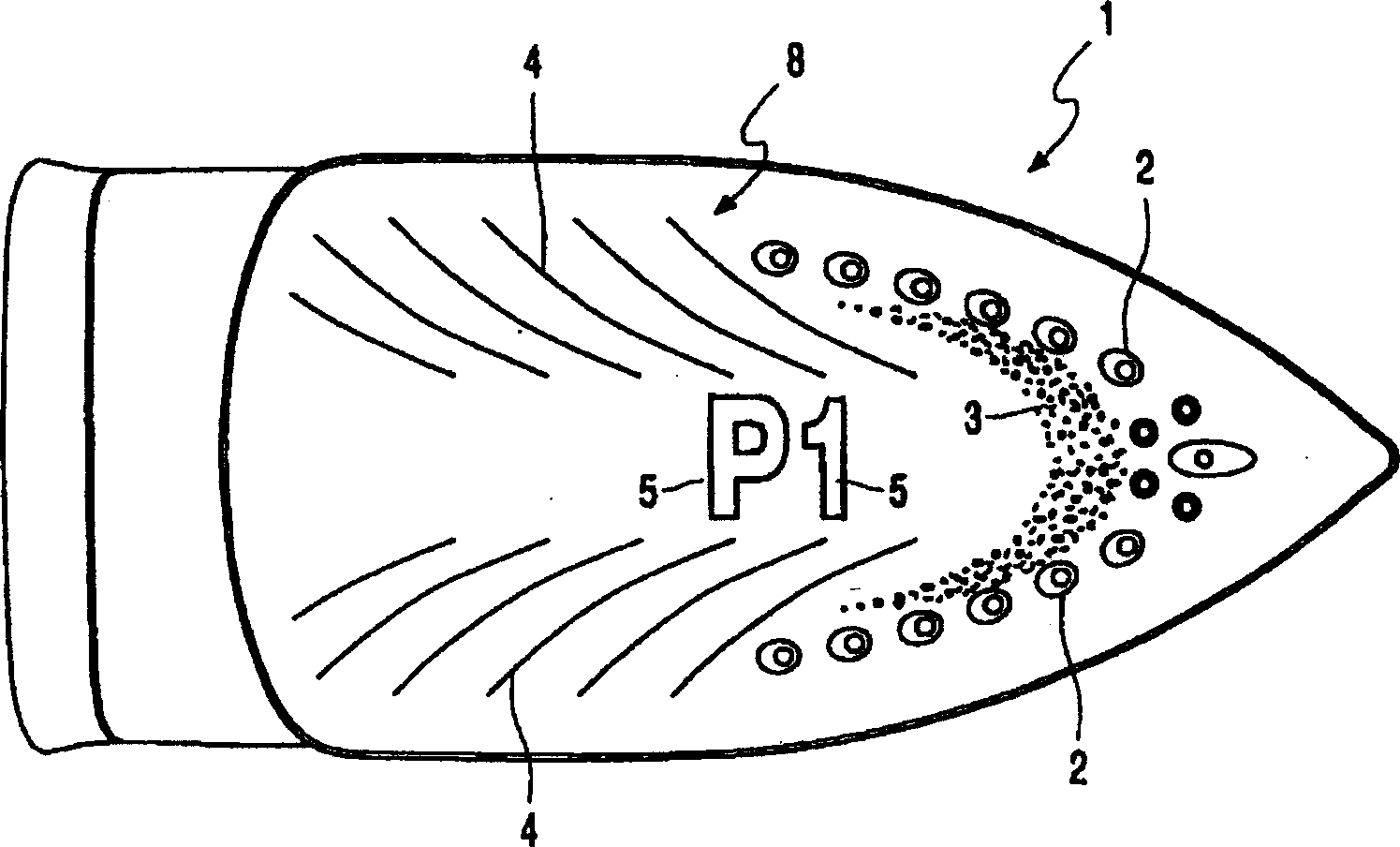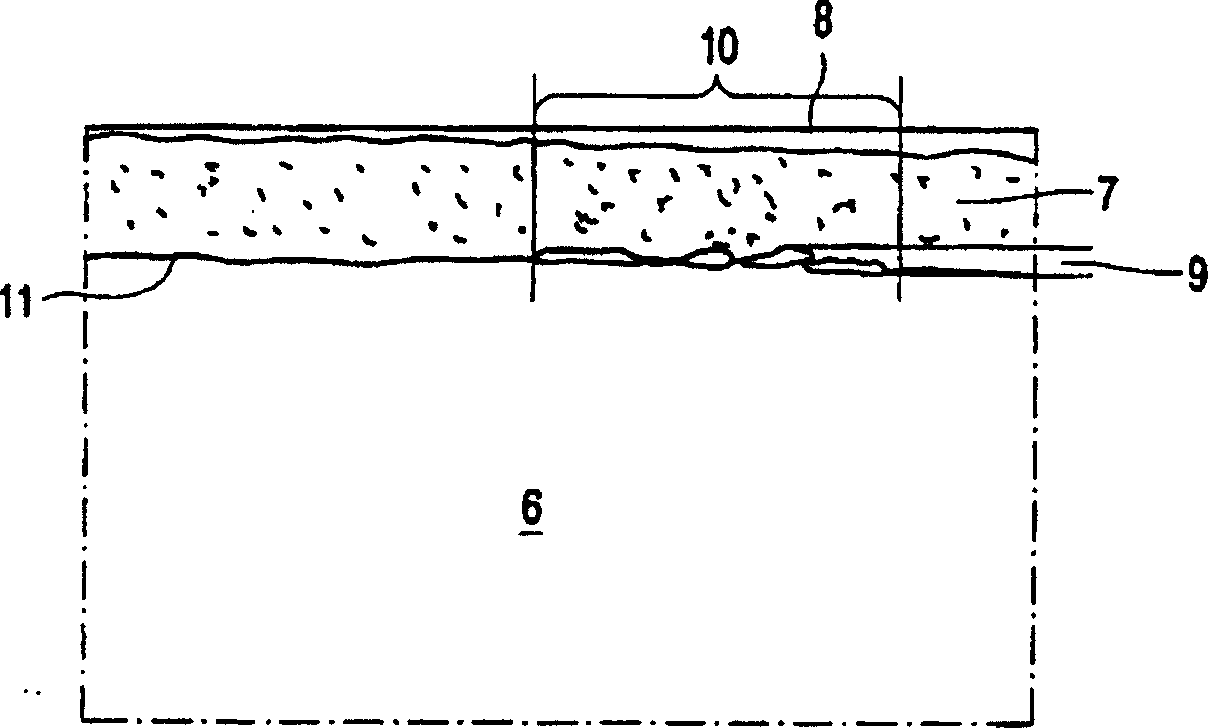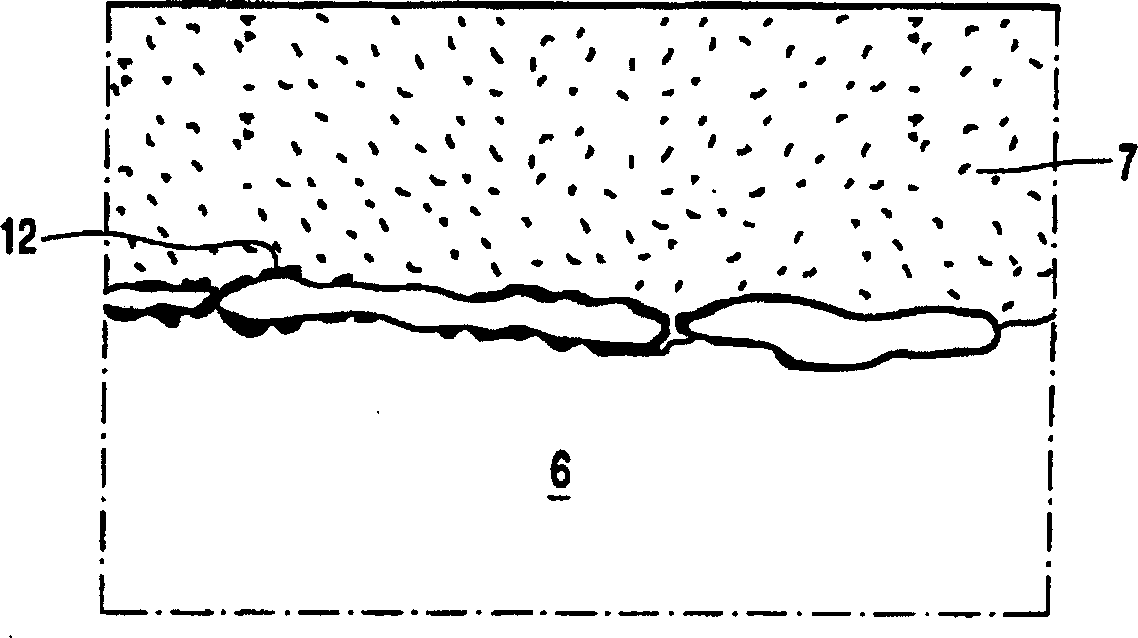Marking of an anodized layer of an aluminium object
A component, marking technology, applied in the direction of copying/marking methods, processes for producing decorative surface effects, temperature recording methods, etc., capable of solving problems such as preventing coloring of anodized layers
- Summary
- Abstract
- Description
- Claims
- Application Information
AI Technical Summary
Problems solved by technology
Method used
Image
Examples
Embodiment Construction
[0023] The part shown in the example figure is the bottom 1 of a steam iron with an outlet 2 for the passage of steam and markings such as: dots of the zone 3, lines 4, and numerals like typefaces 5 .
[0024] The bottom 1 is composed of a substantially plate-shaped substrate 6 made of aluminum alloy and an anodized outer layer 7 forming an ironing surface 8 of the bottom 1 . this is in Figure 2 to Figure 4 , which are micrographs at magnifications of 625X, 2500X and 10,000X, respectively.
[0025] The area of surface 8 forming the markings 3 to 5 can be visually distinguished by the human eye from other parts of surface 8 because it has visual properties different from the corresponding visual properties of adjacent and other parts of surface 8 . The different visual properties of the areas forming the surface 8 marked 3 to 5 in this example are the chroma and gloss of these areas. These areas are gray-black to black in shade and somewhat less glossy than the rest of th...
PUM
| Property | Measurement | Unit |
|---|---|---|
| wavelength | aaaaa | aaaaa |
| wavelength | aaaaa | aaaaa |
Abstract
Description
Claims
Application Information
 Login to View More
Login to View More - R&D
- Intellectual Property
- Life Sciences
- Materials
- Tech Scout
- Unparalleled Data Quality
- Higher Quality Content
- 60% Fewer Hallucinations
Browse by: Latest US Patents, China's latest patents, Technical Efficacy Thesaurus, Application Domain, Technology Topic, Popular Technical Reports.
© 2025 PatSnap. All rights reserved.Legal|Privacy policy|Modern Slavery Act Transparency Statement|Sitemap|About US| Contact US: help@patsnap.com



